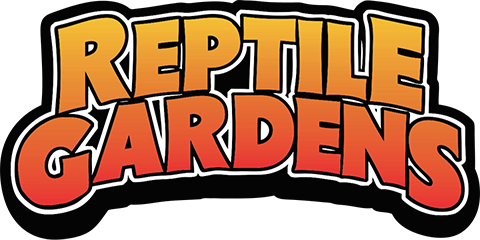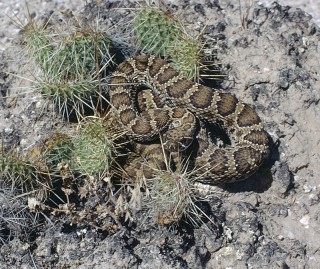Springtime Means Warmth and Flowers and, Yes, Rattlesnakes
It's that time of year again — Spring in Western South Dakota. Our spring brings rain (maybe), sunshine, green grass, the occasional snowstorm, tourists, and of course rattlesnakes.
Pretty soon we will start getting frantic phone calls from local folk with snakes in their yard and from animal control with rattlesnakes in buckets that they got from those same yards. We will hear from people asking how to avoid them when hiking, camping and fishing, from those who want to know how to keep rattlesnakes out of houses, garages and yards, and, of course, what to do if they encounter a snake.
In order to answer those questions we must first begin by explaining a little about the natural history of our slithery adversary. The only rattlesnakes found in western South Dakota are known as Prairie Rattlesnakes (Crotalus viridis). These snakes communally overwinter (den) throughout the area, with some undisturbed den sites numbering in the hundreds of snakes. They must stay far enough underground to stay below the frost line, which is about 6 feet here. Rattlesnakes use the same den sites year after year, decade after decade, even century after century as long as it is undisturbed by humans and our construction machines of progress. I get calls every week from people who believe a snake den has spontaneously erupted under their house or in their back yard. Fortunately, this does not occur, as the snakes continue to use the same dens they have for years. As snakes begin to emerge for the year, usually in mid-April, they will stay close to the den for some time — several weeks in fact. They enjoy the day's warm sunshine but stay close to their dens for protection from the overnight low temperatures and occasional snowstorm.
By early to mid-May, rattlesnakes begin moving farther and farther from their overwintering areas on the lookout for food, water, mates, and temporary shelter. Female snakes usually stay relatively close to home for the summer months, normally within a mile or so of the den. However males can be found traveling five or more miles away from their dens over the course of the season. They are fueled by Spring fever - promises of romance and fresh rodent populations to ravage.
This is when the calls start coming in. My answer to most of the questions is simply: We have chosen to live in western South Dakota in all its glory. Part of that glory is things like bees, box elder bugs, mountain lions, and rattlesnakes. We should count ourselves fortunate to not have the crime, traffic and smog of big cities! It is a simple fact of life that rattlesnakes inhabit all areas of Western South Dakota - the prairies, streams and lakeshores, the Badlands, to the top of Harney Peak, even our towns, cities and backyards.
One should always keep in mind the possibility of encountering our only dangerous species of snake — the Prairie Rattlesnake. It is also important to remember: ALL the other types of snakes in this area are harmless to humans. There are no coral snakes, puff adders, or anything else dangerous.
The snakes were here first and so they were the original beings with unwelcome neighbors moving into their yards. That would be us, the humans, the stewards of our planet. So, how do we cohabitate? That's what folks want to know, well, that and of course the best way to get rid of the snakes?
Stay tuned for part 2 - What to do to avoid rattlesnake encounters and what to do when you do meet one.






